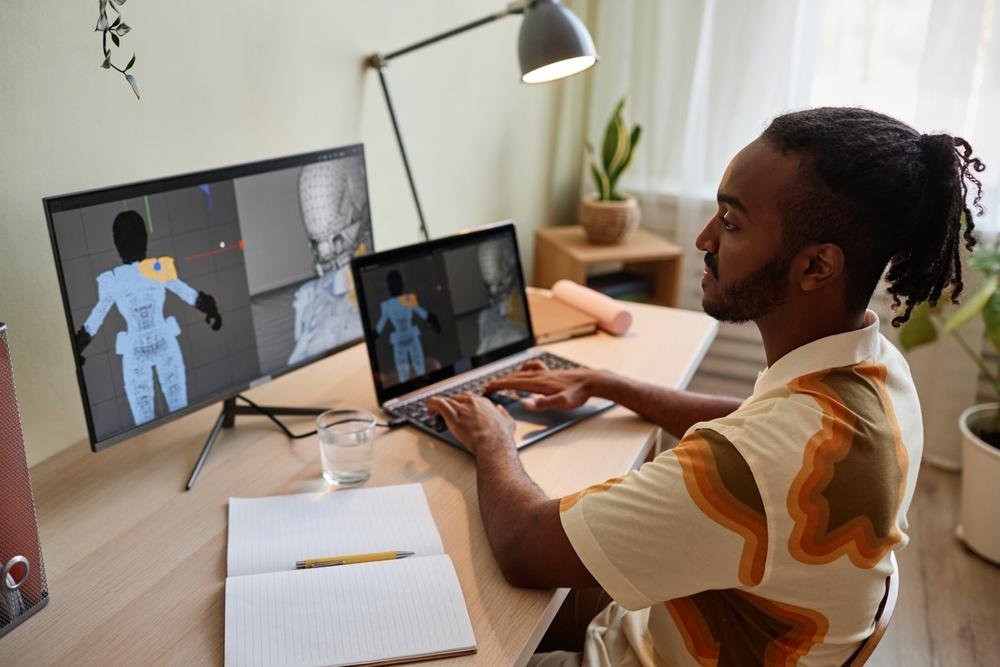Creating a 3D animated masterpiece involves a blend of creativity, technical expertise, and a deep understanding of storytelling. From the initial concept to the final render, the best 3D animation studios follow a meticulous process to bring vibrant worlds, lifelike characters, and engaging narratives to the screen. These studios push the boundaries of what’s possible, delivering awe-inspiring visuals for films, video games, advertising, and beyond.
Here’s a look behind the scenes at the detailed steps the best 3D animation studios take to transform concepts into captivating visual experiences.
1. Concept Development and Storyboarding
Every animated project begins with a strong concept. The initial idea sets the foundation for the entire production, determining the theme, style, and narrative. During this stage, the animation studio works closely with clients or creatives to understand the vision and objectives of the project.
Once the concept is clear, storyboarding comes into play. Storyboards are essentially the blueprint for the animation, showcasing the key scenes, actions, and camera angles. The best 3D animation studios use storyboards to visually plan the sequence of events, ensuring that every frame contributes to the overall flow of the narrative.
Storyboards also help define the pacing of the animation and provide a roadmap for the animators to follow during production. This stage is crucial for aligning the client’s expectations with the final output.
2. Modeling: Bringing Characters and Objects to Life
After the storyboard is approved, the next step is 3D modeling. This is where characters, objects, and environments are digitally sculpted into three-dimensional forms. The best 3D animation studios use advanced software like Maya, Blender, or ZBrush to create detailed models that are ready for animation.
Modeling requires a deep understanding of anatomy, design, and proportions, especially for lifelike characters. The artists create wireframe models that serve as the skeleton for each object or character, ensuring that they can move and interact in the digital world seamlessly.
For highly detailed models, sculptors refine features such as facial expressions, muscle movements, and surface textures. This stage is critical in bringing the characters to life, adding personality and realism to their appearance.
3. Texturing and Shading: Adding Depth and Detail
Once the models are created, texturing and shading come into play. This stage involves adding color, surface texture, and material properties to the 3D models. The best 3D animation studios excel at this by using techniques that replicate real-world materials like skin, metal, or fabric, adding depth and realism to each object.
Texturing artists apply high-resolution images to the 3D models to give them a realistic appearance, ensuring that every surface—from the sheen of a metal object to the subtle creases in clothing—looks authentic. Shading further enhances the models by defining how light interacts with surfaces, creating realistic shadows and highlights.
4. Rigging: Preparing for Animation
Rigging is the process of creating a digital skeleton for characters and objects, allowing them to move realistically. The best 3D animation studios focus heavily on rigging, as it’s essential for producing fluid and believable character movement.
A well-rigged model can be animated with ease, whether it’s a character running, a vehicle moving, or an object interacting with its environment. Animators work with rigging specialists to ensure that every joint, muscle, and bone behaves naturally, making the characters feel alive.
Rigging can be a complex process, particularly for characters with intricate movements or non-human anatomy, but it’s one of the key steps that elevates animation quality.
5. Animation: Bringing the Story to Life
Animation is the heart of the process, where static models are infused with movement and emotion. The best 3D animation studios bring their characters to life through careful timing, motion capture, and keyframe animation techniques.
Animators meticulously control every aspect of a character’s movements, from subtle facial expressions to large, dynamic actions. They ensure that the characters move in a way that aligns with the storyline, emotions, and physics of the world they inhabit.
This stage can take weeks or months, depending on the complexity of the project. Whether it’s a fast-paced action scene or a quiet, intimate moment between characters, animators must capture the right balance of motion and emotion.
6. Lighting and Rendering: Creating the Final Look
Lighting is an often-overlooked but crucial aspect of animation. It sets the mood, atmosphere, and tone of each scene. The best 3D animation studios use advanced lighting techniques to enhance realism, create depth, and highlight important aspects of the scene.
Once lighting is perfected, the project moves into the rendering stage. Rendering is the process of converting the 3D models, textures, and lighting into 2D images or frames. This process requires powerful computers to calculate every detail, from how light bounces off surfaces to how shadows interact with characters and objects.
Rendering can be time-consuming, but it’s what brings the animation to its final form, transforming rough animations into polished, cinematic sequences.
7. Post-Production: Fine-Tuning the Masterpiece
After rendering, the final stage is post-production, where everything comes together. Editors fine-tune the pacing, add sound effects, and integrate any special effects or compositing elements.
Whether it’s a marketing campaign, a feature film, or an explainer video, post-production is where the animation transforms into a cohesive masterpiece ready for the audience.
Conclusion
Creating a 3D animated masterpiece is an intricate, multi-step process that requires a combination of technical skills and artistic vision.
The best 3D animation studios are at the cutting edge of this process, consistently pushing the limits of what’s possible in visual storytelling. Their ability to blend art and technology allows them to create stunning, memorable animations that leave a lasting impact on audiences worldwide.
Creating a 3D animated masterpiece involves a blend of creativity, technical expertise, and a deep…



More Stories
How Dentostack Facilitates Easy Management of Dental Clinics
Buy IPv4 Addresses or Lease IPv4 Addresses
How AWS Database Certified Video Course Help?